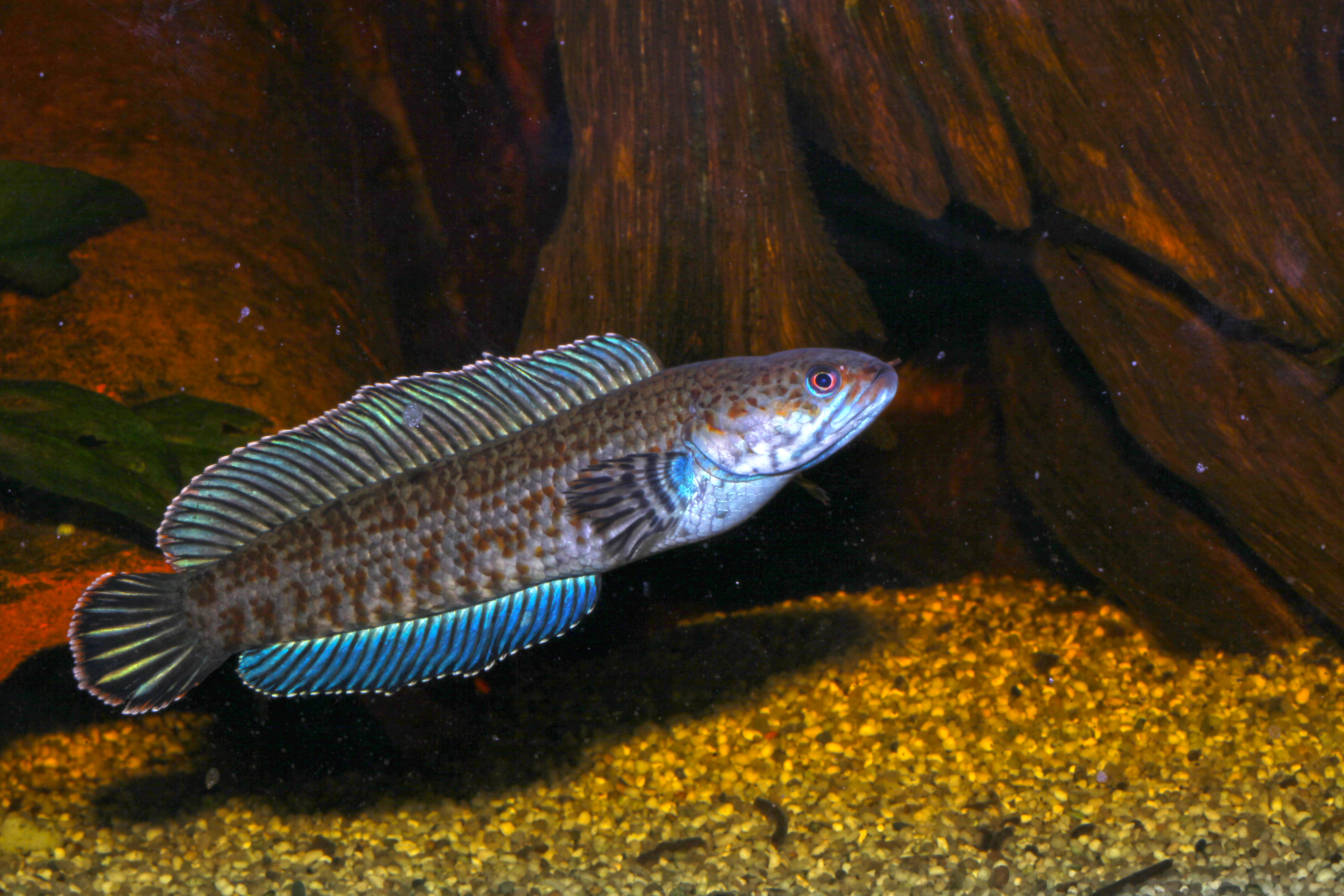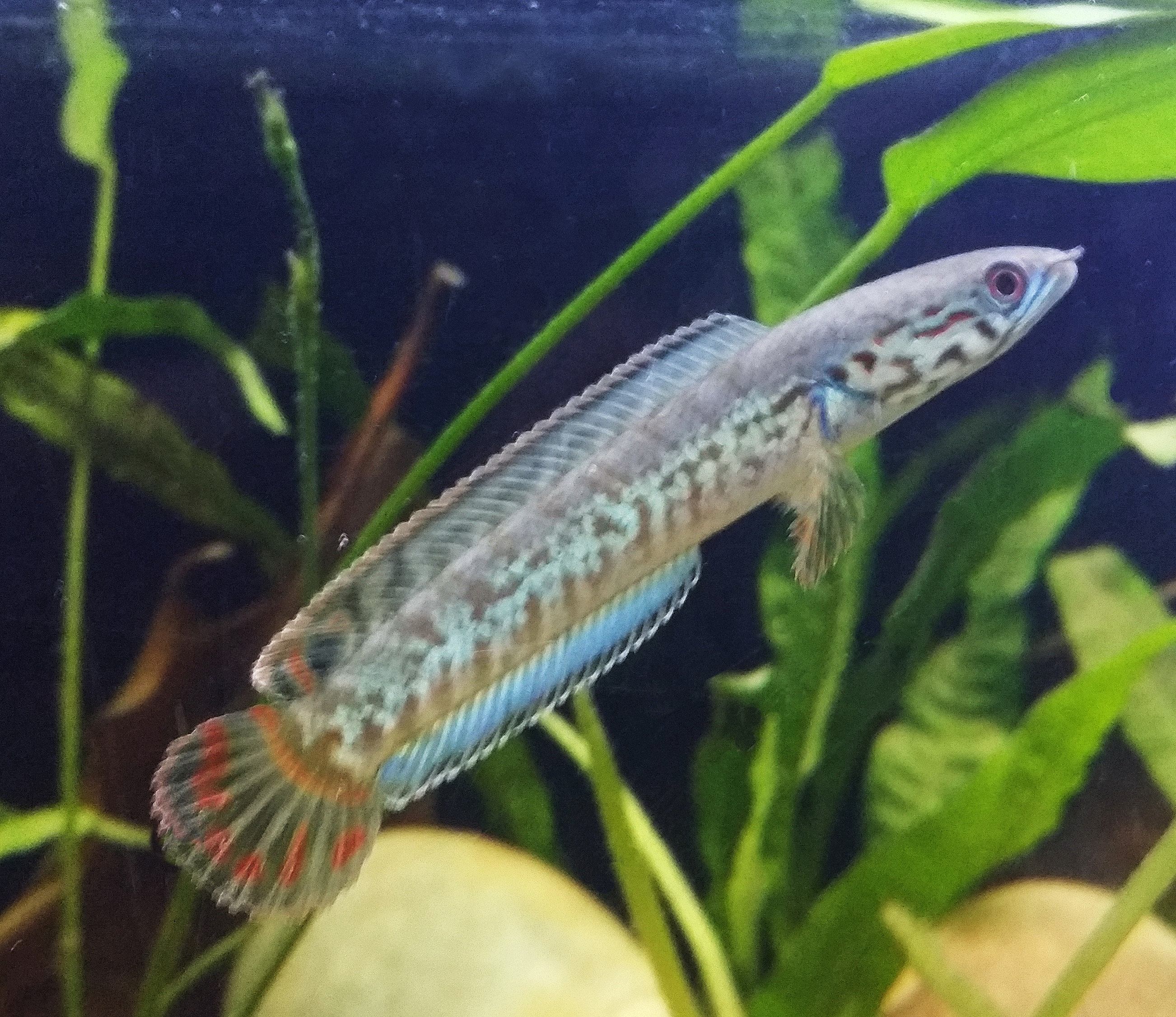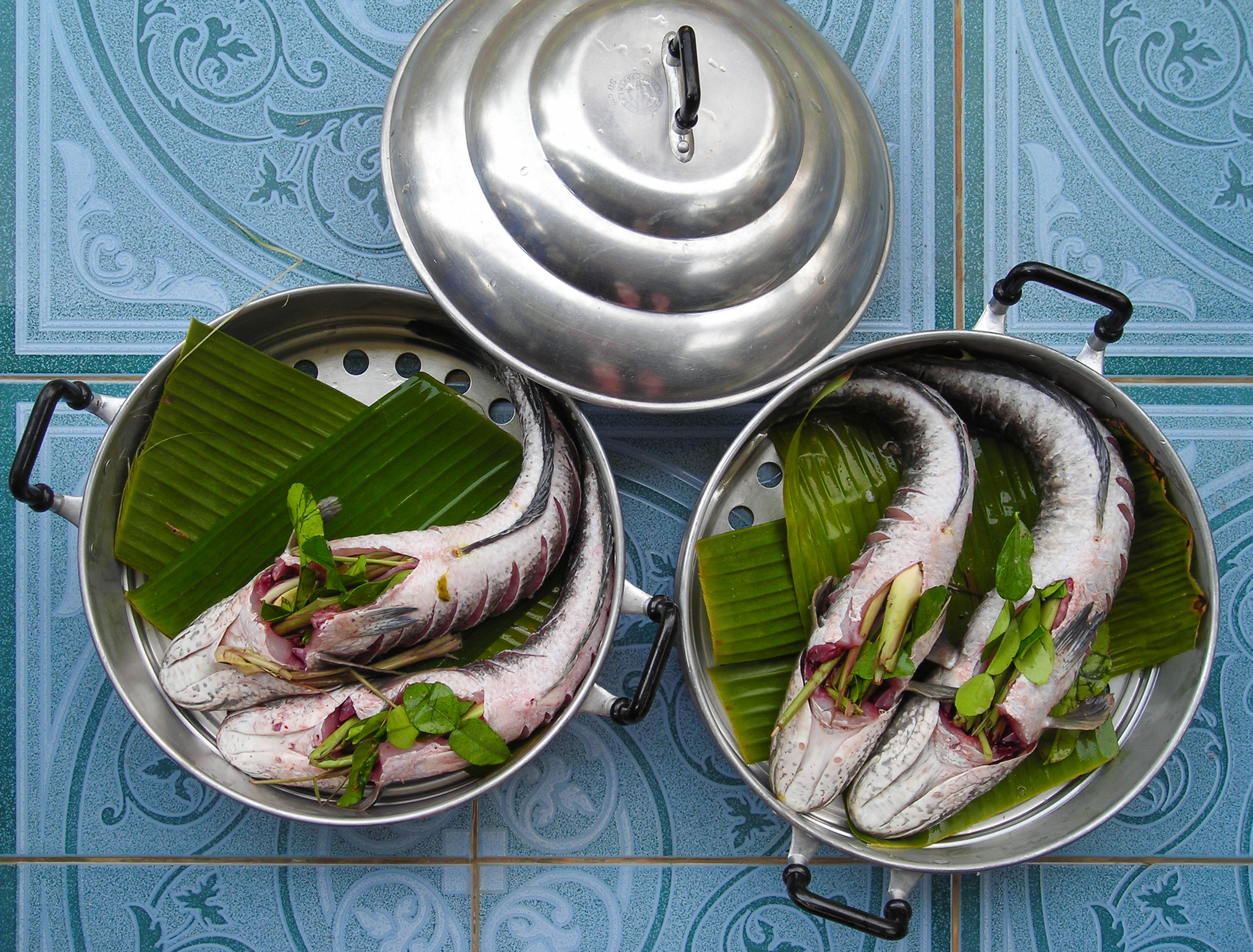|
Channa
''Channa'' is a genus of predatory fish in the Family (biology), family Channidae, commonly known as snakeheads, native to freshwater habitats in Asia. This genus contains about 50 Binomial nomenclature, scientifically described species. The genus has a wide natural distribution extending from Iraq in the west, to Indonesia and China in the east, and parts of Siberia in the Far East. A particularly high Species richness, richness of species exists in Myanmar (Burma), Bangladesh and northeastern Northeast India, India, and many ''Channa'' species live nowhere else. In contrast, a few widespread species have been Introduced species, introduced to several regions outside their natural range, where they often become Invasive species, invasive. The large and medium-sized ''Channa'' species are among the most common staple food fish in several Asian countries, and they are extensively Fish farming, cultured. Apart from their importance as a food fish, snakeheads are consumed in some reg ... [...More Info...] [...Related Items...] OR: [Wikipedia] [Google] [Baidu] |
Dwarf Snakehead
Dwarf snakehead is a term coined by Fishkeeping, aquarists to describe a group of Channa, ''Channa'' snakehead fishes growing to about maximum. They are found in freshwater habitats (often streams) in South and Southeast Asia, and southern China.Endruweit, M. (2017). Description of a new dwarf snakehead (Perciformes: Channidae) from western Yunnan. Vertebrate Zoology 67(2): 173-178. The following snakeheads belong to this group:Lalramliana, J. D. M. Knight, D. V. Lalhlimpuia and M. Singh (2018). Integrative taxonomy reveals a new species of snakehead fish, Channa stiktos (Teleostei: Channidae), from Mizoram, North Eastern India. Vertebrate Zoology 68 (2): 165-175. *''Channa andrao'' *''Channa aurantipectoralis'' *''Channa baramensis'' *''Channa bipuli'' *''Channa bleheri'' *''Channa brunnea'' *''Channa burmanica'' *''Channa coccinea'' = Channa sp. Ignis *''Channa gachua'' *''Channa harcourtbutleri'' *''Channa kelaartii'' *''Channa limbata'' *''Channa lipor'' *''Channa melanostig ... [...More Info...] [...Related Items...] OR: [Wikipedia] [Google] [Baidu] |
Channa Micropeltes
''Channa micropeltes'', giant snakehead, giant mudfish or toman harimau, is among the largest species in the family Channidae, capable of growing to in length and a weight of . It is native to the fresh waters of Southeast Asia (South Indian populations are now regarded as a separate species, ''Malabar snakehead, C. diplogramma''),Benziger A, Philip S, Raghavan R, Anvar Ali PH, Sukumaran M, et al. (2011). ''Unraveling a 146 Years Old Taxonomic Puzzle: Validation of Malabar Snakehead, Species-Status and Its Relevance for Channid Systematics and Evolution.'' PLoS ONE 6(6): e21272 but has also been Introduced species, introduced elsewhere and is considered Invasive species, invasive in Taiwan. Other names include ''shol machh'' (শোল মাছ ) in Bengali language, Bengali, red snakehead, redline snakehead, and ''ikan toman'' (where ''ikan'' is fish in Malay Language, Malay and Indonesian language, Indonesian). Biology The young of the ''C.micropeltes'' are red in color, with ... [...More Info...] [...Related Items...] OR: [Wikipedia] [Google] [Baidu] |
Channidae
The snakeheads are members of the freshwater perciform fish family Channidae, native to parts of Africa and Asia. These elongated, predatory fish are distinguished by their long dorsal fins, large mouths, and shiny teeth. They breathe air with gills, which allows them to migrate short distances over land. They have suprabranchial organs, which are primitive forms of labyrinth organs, that develop when they grow older. The two extant genera are ''Channa'' in Asia and '' Parachanna'' in Africa, consisting of more than 50 species. They are valuable as a food source and have become notorious as an intentionally released invasive species. These fish have been kept as pets but as they get larger, people let them go into ponds, lakes, and rivers, making these fish invasive. Description The various species of snakeheads differ greatly in size; dwarf snakeheads, such as '' Channa orientalis'', do not surpass in length. Most other snakeheads reach between . Five species ('' C. argus'' ... [...More Info...] [...Related Items...] OR: [Wikipedia] [Google] [Baidu] |
Channa Bleheri
''Channa bleheri'' (the rainbow snakehead) is a species of dwarf snakehead that is endemic to the Brahmaputra River basin in the Indian states of Assam and Arunachal Pradesh.SeriouslyFishChanna bleheri Retrieved 11 February 2019. It is among the most colorful species of snakehead. Distribution and etymology In the wild, this species primarily inhabits waters within the Indian state of Assam, and it is known in Assamese as ''sengeli'' or ''chengeli''. Its binomial name honors the explorer Heiko Bleher. The specific name of this fish honours the explorer and exotic fish trader Heiko Bleher who assisted in the collection of the type and gave it to Vierke. Endemic to the Brahmaputra River basin, this fish has a type location at Dibrugarh, a city in the northeastern part of Assam.Courtenay, Walter and Williams, James. ''Snakeheads (Pisces, Channidae): A Biological Synopsis and Risk Assessment''p. 63(U.S. Department of the Interior, U.S. Geological Survey, Jan 1, 2004). Its clos ... [...More Info...] [...Related Items...] OR: [Wikipedia] [Google] [Baidu] |
Barca Snakehead
The Barca snakehead (''Channa barca'') is a rare species of snakehead. It is endemic to the upper Brahmaputra River basin in northeastern India and Bangladesh. Records from Nepal are of doubtful validity. Overall it has been assessed as data deficient by the IUCN, and in 2014 it was assessed as critically endangered in Bangladesh by the IUCN. In Assam, it is locally known as ''cheng garaka'' or ''garaka cheng''. This is a relatively large snakehead, reaching a total length of up to . The species is regarded as an excellent food fish, and it is also highly desired by aquarists, but its rarity, behavior and large size makes it unsuitable for most aquariums.SeriouslyFishChanna barca Retrieved 14 February 2019. Distribution, habitat and behavior The barca snakehead is only known from the upper Brahmaputra River basin the Assam and Nagaland in India, and Sylhet in Bangladesh. Records from Nepal are of doubtful validity. It mostly inhabits wetlands, often near the margins, but can ... [...More Info...] [...Related Items...] OR: [Wikipedia] [Google] [Baidu] |
Mouthbrooding
Mouthbrooding, also known as oral incubation and buccal incubation, is the care given by some groups of animals to their offspring by holding them in the mouth of the parent for extended periods of time. Although mouthbrooding is performed by a variety of different animals, such as the Darwin's frog, fish are by far the most diverse mouthbrooders. Mouthbrooding has evolved independently in several different families of fish. Mouthbrooding behaviour Paternal mouthbrooders are species where the male looks after the eggs. Paternal mouthbrooders include the arowana, various mouthbrooding bettas and gouramies such as '' Betta pugnax'', and sea catfish such as '' Ariopsis felis''. Among cichlids, paternal mouthbrooding is relatively rare, but is found among some of the tilapiines, most notably the black-chin tilapia '' Sarotherodon melanotheron''. In the case of the maternal mouthbrooders, the female takes the eggs. Maternal mouthbrooders are found among both African and South American ... [...More Info...] [...Related Items...] OR: [Wikipedia] [Google] [Baidu] |
Food Fish
Many species of fish are caught by humans and consumed as food in virtually all regions around the world. Their meat has been an important dietary source of protein and other nutrients in the human diet. The English language does not have a special culinary name for food prepared from fish like with other animals (as with '' pig'' vs. ''pork''), or as in other languages (such as Spanish '' pez'' vs. '' pescado''). In culinary and fishery contexts, ''fish'' may include so-called shellfish such as molluscs, crustaceans, and echinoderms; but, more expansively, ''seafood'' covers both fish and other marine life used as food. Since 1961, the average annual increase in global apparent food fish consumption (3.2 percent) has outpaced population growth (1.6 percent) and exceeded the increase in consumption of meat from all terrestrial animals except poultry (4.9 percent), both combined (2.8 percent) and individually (bovine, ovine, porcine, et cetera). In ''per capita'' terms, food f ... [...More Info...] [...Related Items...] OR: [Wikipedia] [Google] [Baidu] |
Bhojpuri
Bhojpuri may refer to: * Bhojpuri language, an Indo-Aryan language of India and Nepal * Bhojpuri grammar, grammatical rules of the language * Bhojpuri nouns, nouns of the language * Bhojpuri people, people who speak the language * Bhojpuri region or Bhojpur region, region of India * Bhojpuri music, music of India * Bhojpuri cinema, Bhojpuri-language cinema, part of Indian cinema * Bhojpuri cuisine, cuisine of the people * Bhojpuri literature, literature in the language * Bhojpuri Channel, an Indian TV channel * Bhojpuri, Rajasthan, a village in India See also * * Bhojpur (other) {{dab, geo Language and nationality disambiguation pages ... [...More Info...] [...Related Items...] OR: [Wikipedia] [Google] [Baidu] |
Malayalam
Malayalam (; , ) is a Dravidian languages, Dravidian language spoken in the Indian state of Kerala and the union territories of Lakshadweep and Puducherry (union territory), Puducherry (Mahé district) by the Malayali people. It is one of 22 Languages with official status in India, scheduled languages of India. Malayalam was designated a "Classical Languages of India, Classical Language of India" in 2013. Malayalam has official language status in Kerala, Lakshadweep and Puducherry (Mahé, Puducherry, Mahé), and is also the primary spoken language of Lakshadweep. Malayalam is spoken by 35.6 million people in India. Malayalam is also spoken by linguistic minorities in the neighbouring states; with a significant number of speakers in the Kodagu and Dakshina Kannada districts of Karnataka, and Kanyakumari district, Kanyakumari, Coimbatore district, Coimbatore and Nilgiris district, Nilgiris district of Tamil Nadu. It is also spoken by the Malayali diaspora, Malayali Diaspora wo ... [...More Info...] [...Related Items...] OR: [Wikipedia] [Google] [Baidu] |
Assamese Language
Assamese () or Asamiya ( ) is an Indo-Aryan language spoken mainly in the north-eastern Indian state of Assam, where it is an official language. It has long served as a ''lingua franca'' in parts of Northeast India."Axomiya is the major language spoken in Assam, and serves almost as a lingua franca among the different speech communities in the whole area." It has over 15 million native speakers and 8.3 million second language, second language speakers according to ''Ethnologue''. Nefamese, an Assamese-based pidgin in Arunachal Pradesh, was used as a lingua franca till it was replaced by Hindi language, Hindi; and Nagamese Creole, Nagamese, an Assamese-based Creole language, continues to be widely used in Nagaland. The Kamtapuri language of Rangpur division of Bangladesh and the Cooch Behar district, Cooch Behar and Jalpaiguri district, Jalpaiguri districts of India is linguistically closer to Assamese, though the speakers identify with the Bengali culture and the literary lan ... [...More Info...] [...Related Items...] OR: [Wikipedia] [Google] [Baidu] |
Monogamy In Animals
Some animal species have a monogamous mating system, in which pairs bond to raise offspring. This is associated, usually implicitly, with sexual monogamy. Monogamous mating Monogamy is defined as a pair bond between two adult animals of the same species. This pair may cohabitate in an area or territory for some duration of time, and in some cases may copulate and reproduce with only each other. Monogamy may either be short-term, lasting one to a few seasons or long-term, lasting many seasons and in extreme cases, life-long. Monogamy can be partitioned into two categories, social monogamy and genetic monogamy which may occur together in some combination, or completely independently of one another.Ophir, Alexander G., Phelps, Steven M., Sorin, Anna Bess & O. Wolff, J. (2008)Social but not genetic monogamy is associated with greater breeding success in prairie voles/ref> As an example, in the cichlid species '' Variabilichromis moorii'', a monogamous pair will care for eggs and y ... [...More Info...] [...Related Items...] OR: [Wikipedia] [Google] [Baidu] |
Labyrinth Organ
The Anabantoidei are a suborder of anabantiform ray-finned freshwater fish distinguished by their possession of a lung-like labyrinth organ, which enables them to breathe air. The fish in the Anabantoidei suborder are known as anabantoids or labyrinth fish, or colloquially as gouramies (which more precisely refers to the family Osphronemidae). Some labyrinth fish are important food fish, and many others, such as the Siamese fighting fish and paradise fish, are popular as aquarium fish. Labyrinth organ The labyrinth organs, a defining characteristic of fish in the suborder Anabantoidei, is a much-folded supra branchial accessory breathing organ. It is formed by vascularized expansion of the epibranchial bone of the first gill arch and used for respiration in air.Pinter, H. (1986). Labyrinth Fish. Barron's Educational Series, Inc., This organ allows labyrinth fish to take in oxygen directly from the air, instead of taking it from the water in which they reside through use of g ... [...More Info...] [...Related Items...] OR: [Wikipedia] [Google] [Baidu] |







